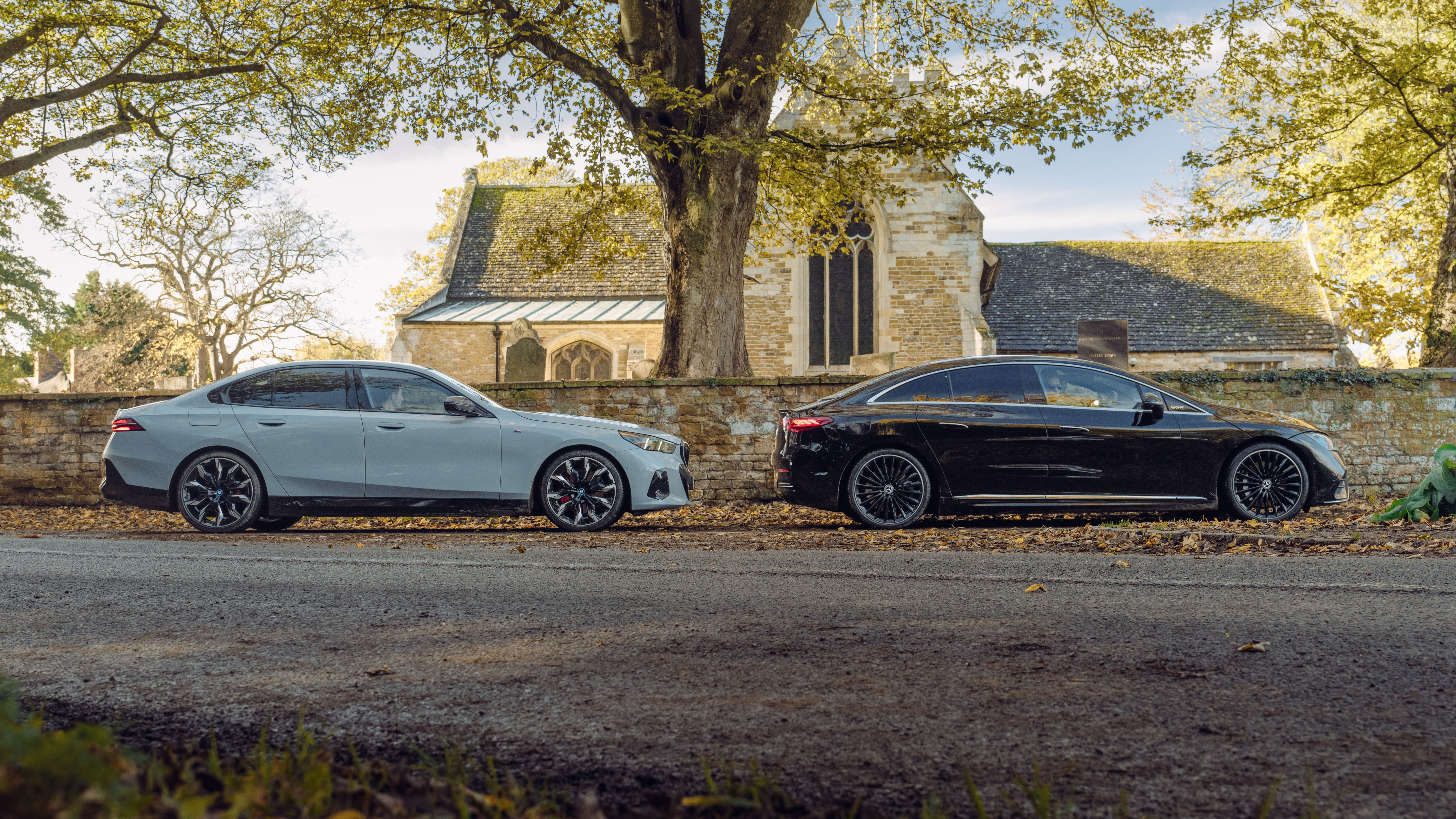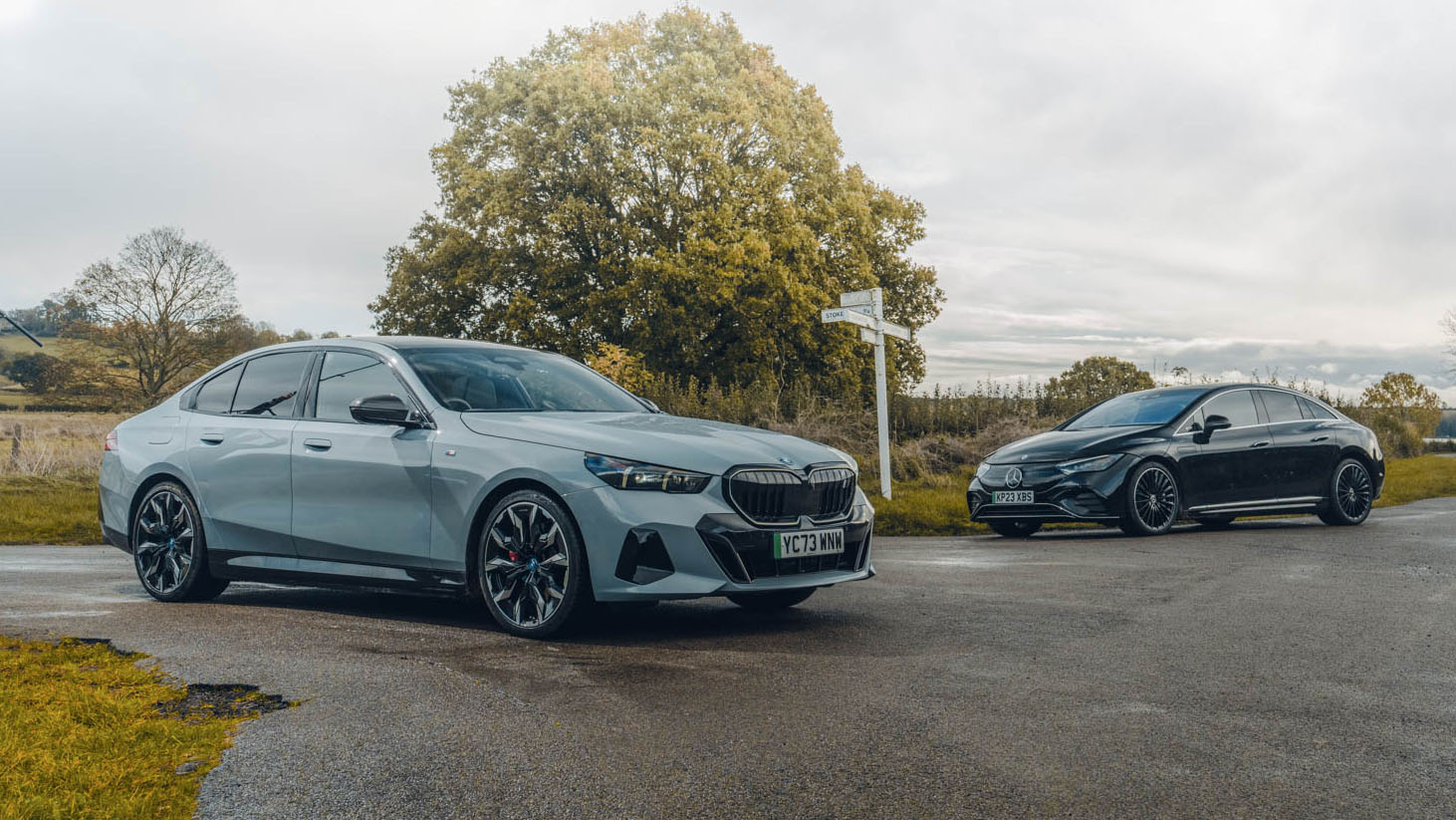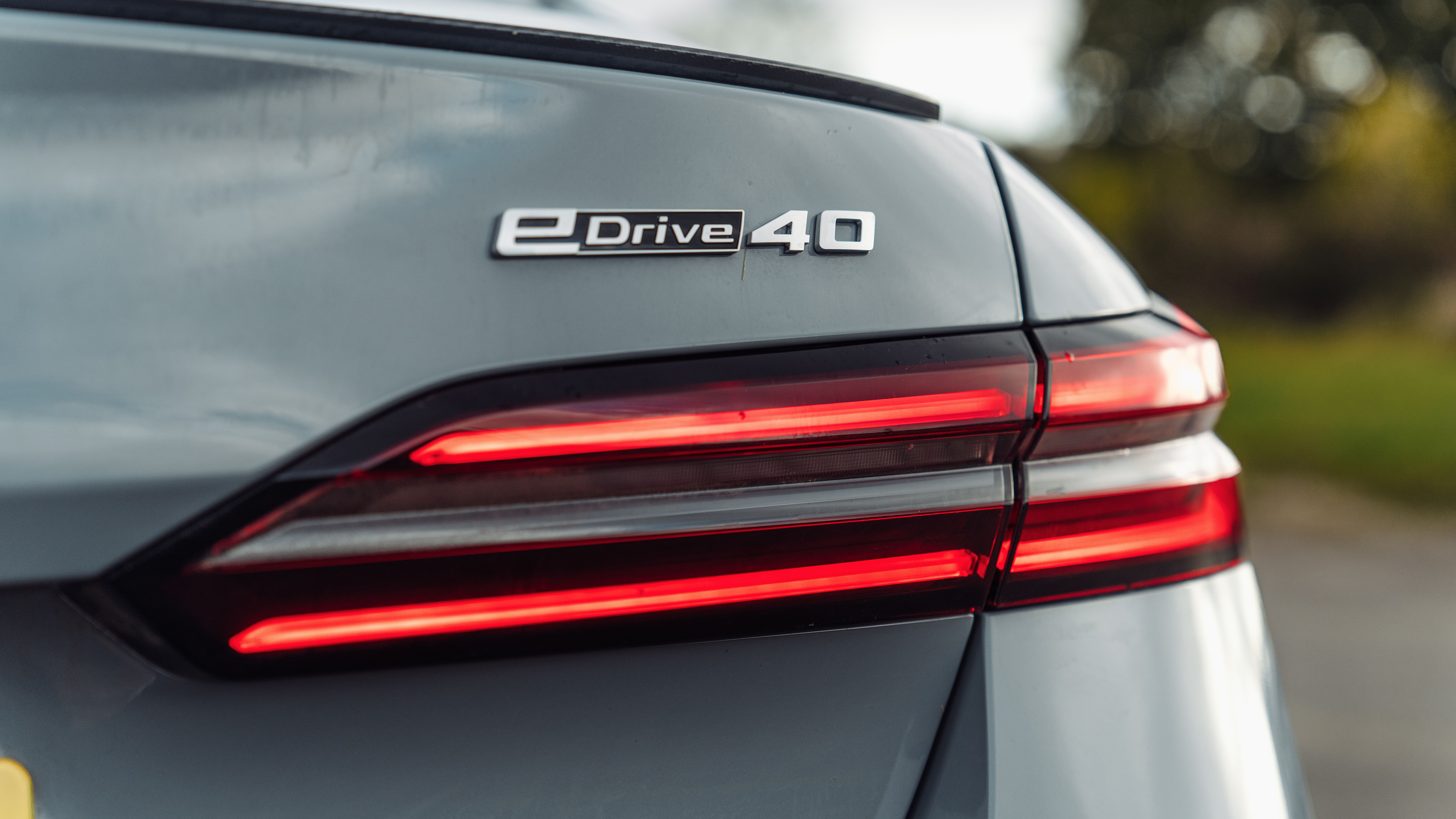
The big electric exec saloon test: Mercedes EQE vs BMW i5
The 5 Series vs E-Class test used to be the big exec saloon prize fight. Who’s had the best rethink for the electric era?
There was a time not so long ago when BMW really pushed boundaries, failed spectacularly to play it safe, embraced innovation hard enough to make bones creak. But back then it wasn’t an exercise to see who could make the ugliest front end – the i3 was so far ahead of the game it had packed up and gone home before others caught up. The i8 was a hybrid sports car so experimental it had customers searching for an appropriate safe word.
But things have changed. Where the new BMW 5 Series now has an electric version – the i5 – this G60 shares a platform with internally combusted brethren, which invites inevitable compromise. Meanwhile, Mercedes-Benz has produced a bespoke architecture that intends to make the best use of electric motivation – the EQE is a Day One electrified car. So where Merc seems to have doubled down on EVs, BMW looks like it has started hedging bets. But all is not as it seems.
Firstly, the BMW is better looking. Yes, that may be the reaction of a conservative mind, but next to the egg-shaped pebble of the EQE, the BMW has a lot more form and texture. Traditional three-box it may be, but the gently smoothed surfacing and proportions are less jarring than the Merc, which looks like it’s been developed by lying at the bottom of a fast flowing river.
Photography: Mark Riccioni
The Mercedes has mass where the BMW has geometric muscle. Yes, that flared nostril of a front grille with its moveable plastic flaps on the BMW is a bit in yer face, but it suits the car better than the wraparound ooze that is the EQE’s nose. Both have overly complex wheels – the BMW in the pictures featuring 21in ‘Individual’ spec aero alloys, the EQE similarly sized rims made up of roughly 400 hard to clean spokes – but moving around the car, the wide rear lights of the i5 make it look lower and wider, where the EQE looks a bit pinched at the back.
It’s the same story on the inside. The BMW has a seamless curved set of interface screens, the Mercedes a decent driver’s display and a somewhat stuck-on portrait screen in the middle. You look out over the BMW’s bonnet, albeit stationed behind a steering wheel that’s much too thick, where the Merc’s nose drops away. In the BMW you feel – and are – lower, more pilot than operator, in the Mercedes there’s a feeling you’re in a low SUV. And yes, there’s the EQE SUV out there.
And both suffer slightly from digital function disease, but the BMW is easier to manage. It has to be noted that both can be programmed appropriately if you’re willing to spend a little time, and it’s worth it because, let’s be honest, many of the added value aspects you simply won’t use once you’ve set it up. It’s not strange that we crave simplicity.
Another aspect of the added technology is that both have largely annoying ADAS (advanced driver assistance systems), although again, both have the facility to switch the electronic minders off after too many button presses and swipes. If you live in a Truman Show-esque experiment that consists of perfectly painted white lines, conveniently displayed signage and scrupulously polite people, they might work. But we live in a world that’s a bit careworn around the edges, and temporary roadworks are sometimes applied by people who are very tired and/or temporarily insane, so they’re more of a distraction than a help most of the time.
The surprises keep coming though – as far as space goes, you’d think the bespoke EV would eat the BMW’s lunch, but there’s decent if not spectacular space in the back of the BMW, and although the EQE scores with shoulder room, the sloping roofline makes it feel smaller. The BMW has no frunk (under that bonnet are a few pipes and a sucking void), but neither does the EQE, and somehow, the BMW has a much bigger boot. So that bespoke EV platform delivers no real world advantage over the ‘compromised’ BMW.
There’s no doubt that the BMW is the more satisfying car. More traditional, but more effective
And that’s before we even get to how these cars drive. As a sporting saloon, the i5 feels a little heavy, but the faster you go, the more nimble it feels. The steering is precise, the body control taut, the suspension expensive feeling. You’ll feel bumps but not be disturbed by them, and there’s a calm balance – a fun car to hustle a little bit, if not overly exciting. The EQE, on the other hand, is more limo-like and less accurate and yet seems to get caught out by certain kinds of road imperfections – it’ll thump on a back road where the BMW smothers.
And the Merc just isn’t a fun car to drive – very nice to cruise in, but a bit numb everywhere else. Of course, both of these cars get much faster dual motor variants with less conservative natures – the EQE 53 has 626bhp/700lb ft (or 687bhp/738lb ft with the AMG Dynamic Plus pack), which can manage 3.5 and 3.3 second 0-62mph times. The BMW i5 M60 xDrive very definitely isn’t an electric ‘M’ car, but 593bhp/605lb ft and 0–62mph in 3.8 certainly doesn’t make it sound particularly pedestrian. Neither feel anything like the two lower-powered cars we have here, but the intellectual distance between fast EQE and slow(er) EQE is much further than the two BMW products.
Top Gear
Newsletter
Thank you for subscribing to our newsletter. Look out for your regular round-up of news, reviews and offers in your inbox.
Get all the latest news, reviews and exclusives, direct to your inbox.
More complication comes in the specification, because both have slightly Byzantine model lines and money laundering optional equipment. The BMW i5 40 starts at just over £74k, with a base EQE 300 a smidge under £69k (the 350 starts at 76-ish). But as tested here, the Mercedes weighs in at £86,345 for this AMG Line Premium Plus, which sounds like a lot, until you realise that as optioned this M Sport Pro i5 (£76,200) tots up a hefty £94,375. Which is only three-grand-ish off M60 money. The advice would be to try and keep those options to a minimum or you start to wonder whether an upgrade is the better course.
But if you can keep these cars to reasonable prices – as reasonable as £75+k sounds to your wallet or company car scheme – there’s no doubt that the BMW is the more satisfying car. Yes, it’s more traditional, but it is also more effective. It may be born from a ‘compromised’ non-bespoke platform, but the way it rides, steers, operates and feels makes it a better car than the EQE.
It’s also faster, charges at a higher average and isn’t that far removed in terms of range even with a smaller battery. It also looks slicker, although that’s subjective. But it’s a convincing victory for the i5 – BMW may not be leading the way in innovation, but it’s nailing the execution.
Verdict
- BMW i5: A very solid EV. Not as exciting as the M60, but trims the line between efficiency and fun. Looks subtle, too. 8/10
- Mercedes EQE: A decent EV that’s great in some areas, slightly disappointing in others. Not quite nailed it yet. 6/10
Trending this week
- Car Review
Renault Clio











